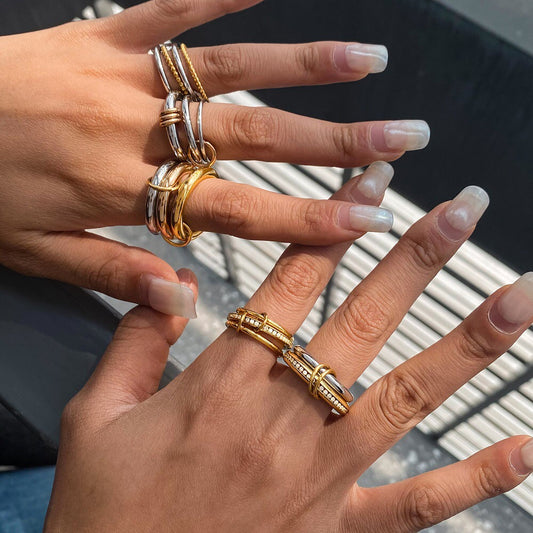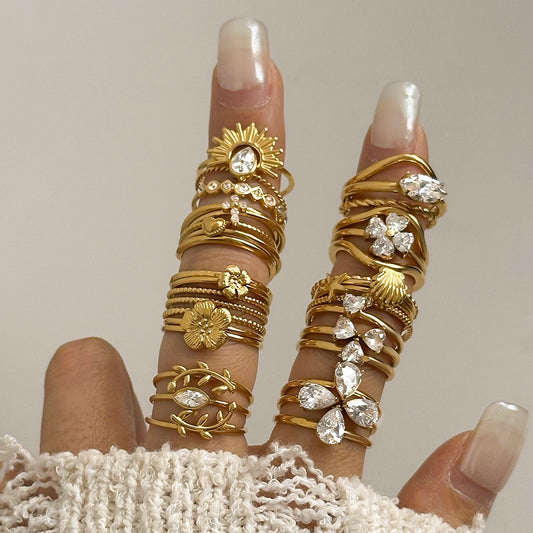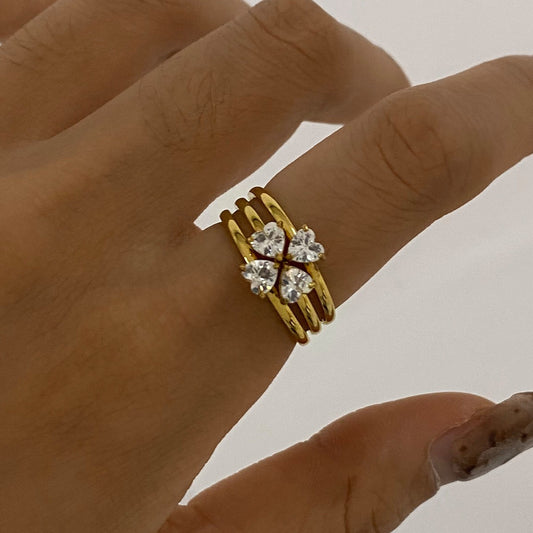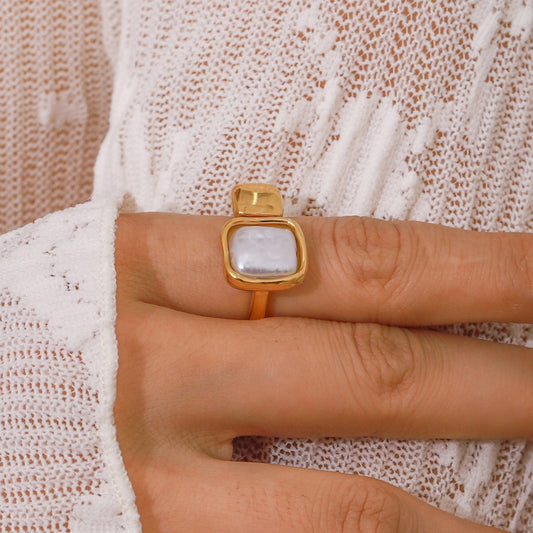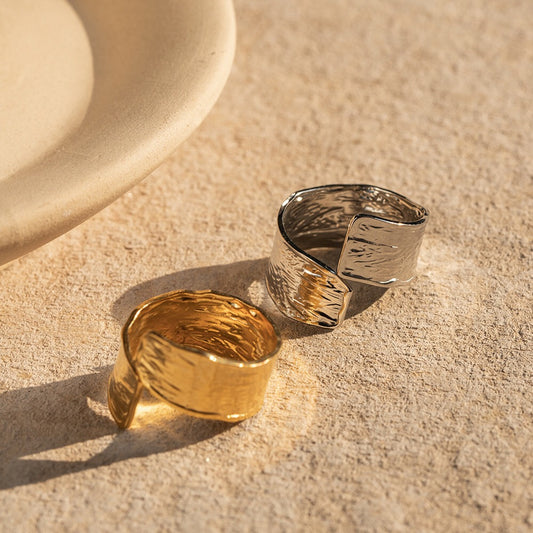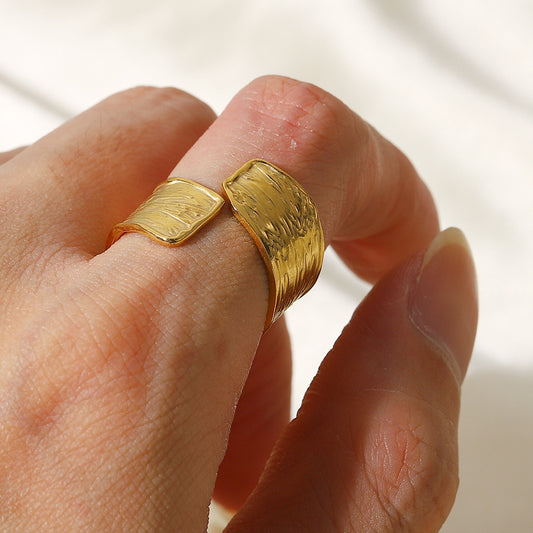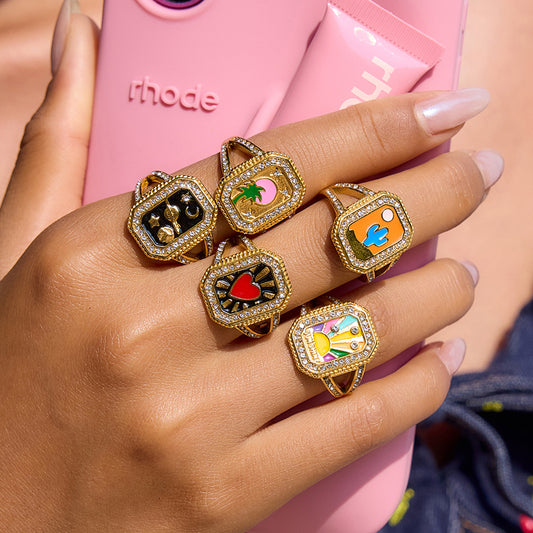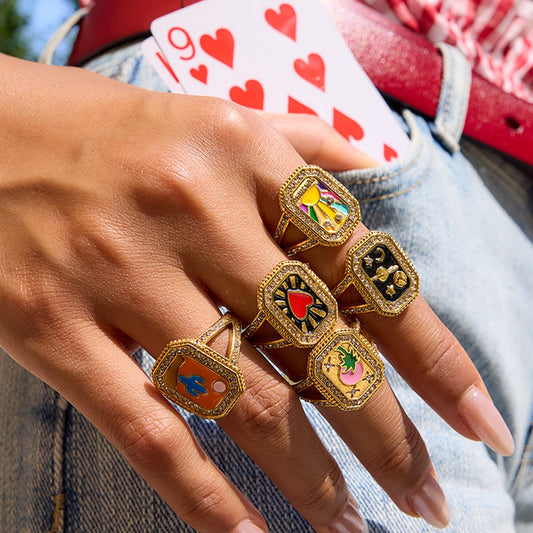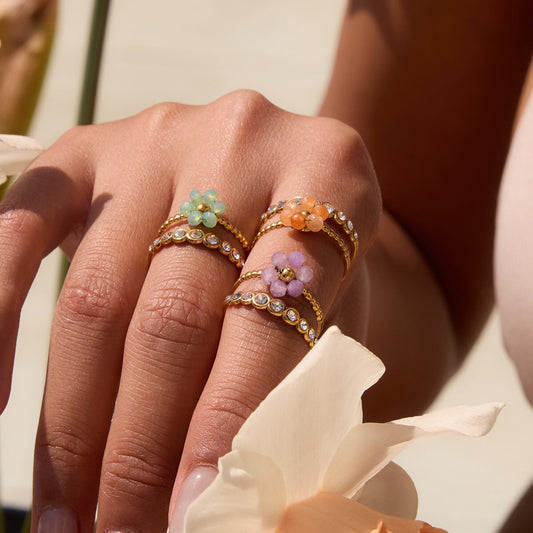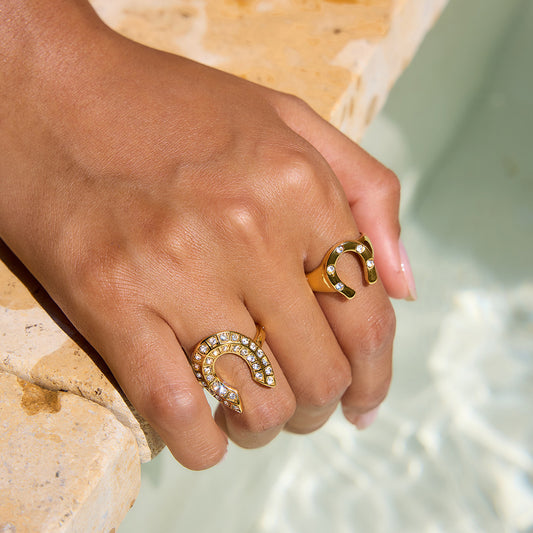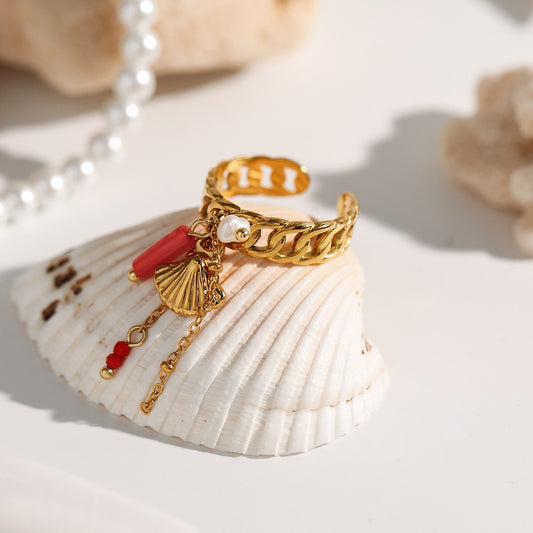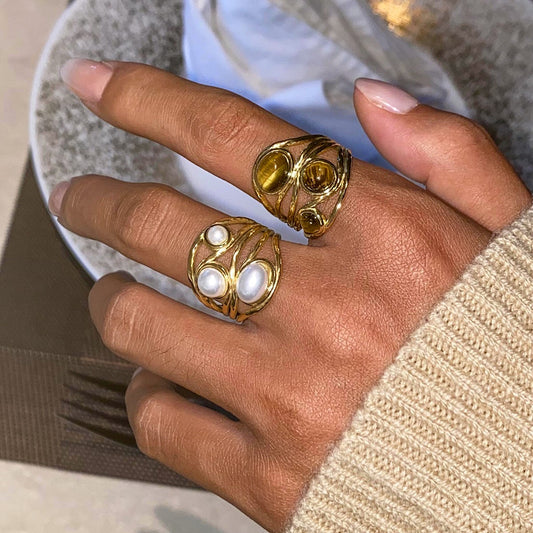The oval ring balances classic charm with modern versatility with its soft, curved silhouette and inherent ability to flatter every finger shape—making it a staple for engagement bands, everyday accessories, and special-occasion pieces alike. Unlike sharp geometric shapes or overly trendy designs, the oval’s gentle symmetry feels both timeless and fresh, adapting to decades of style shifts without losing its appeal. The global jewelry market size was estimated at USD 366.79 billion in 2024 and is projected to reach USD 578.45 billion by 2033, growing at a CAGR of 5.3%. Whether you’re wearing a dainty oval stackable band or a showstopping oval diamond engagement ring, this shape adds a touch of refinement to any look.
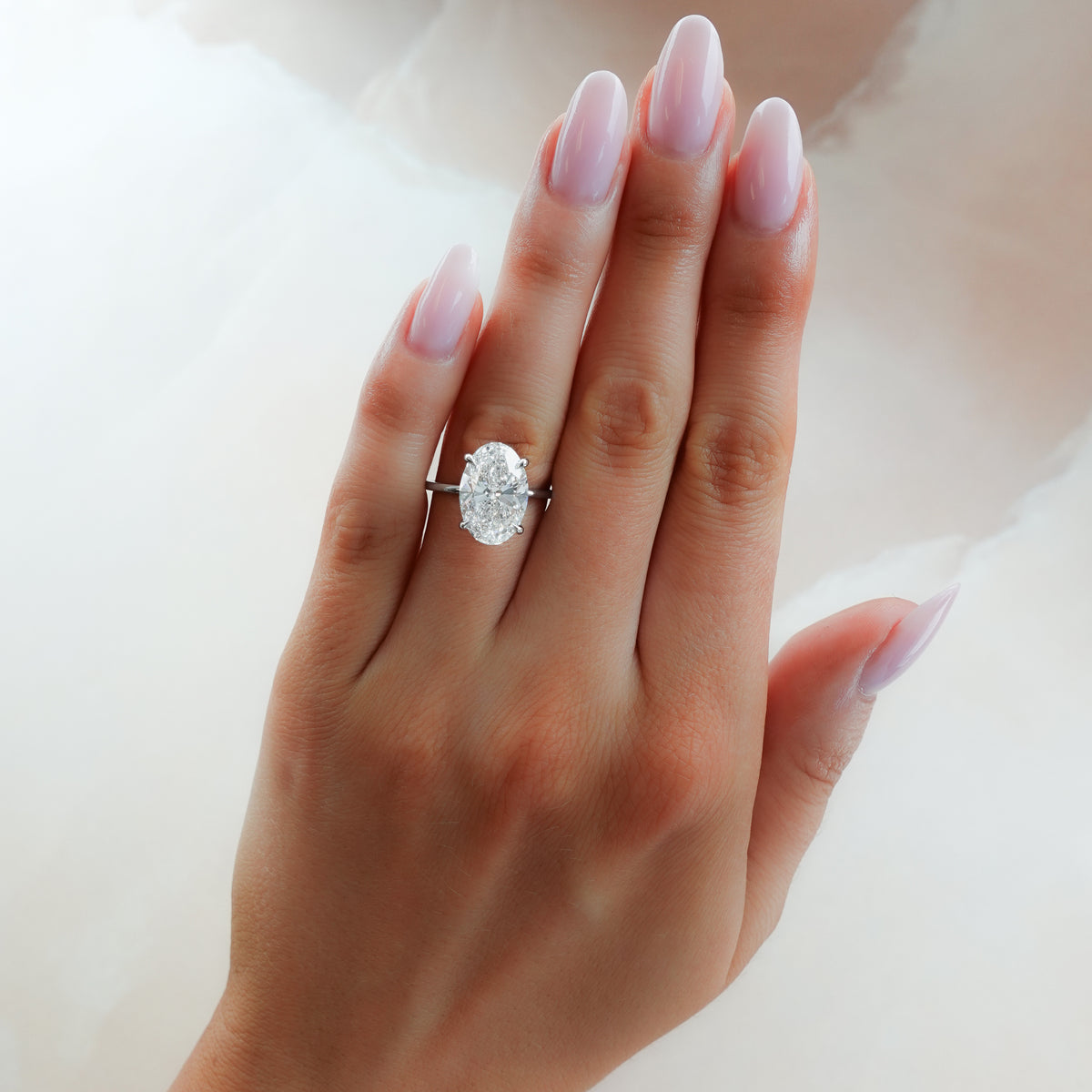
What Makes Oval Ring Special?
Oval rings stand out from other jewelry styles for their unique blend of aesthetics, practicality, and versatility. They’re designed to look beautiful and feel intentional—whether you’re wearing them daily or saving them for milestones.
Core Traits of Oval Rings
-
Flattering Silhouette: The oval’s elongated shape creates an optical illusion that lengthens and slims the finger, making it a universally flattering choice. Unlike round rings (which can appear bulky on smaller fingers) or square rings (which may clash with delicate hands), the oval’s soft curves complement every hand size and shape—from petite to broad fingers.
-
Timeless Appeal: The oval shape has been a jewelry favorite for over a century, dating back to the Art Deco era of the 1920s. Its enduring popularity means an oval ring won’t feel outdated in a few years; it’s a piece you can wear for decades, or even pass down as an heirloom.
-
Gemstone Showcase: The oval cut (for gemstones or diamonds) maximizes sparkle and color. Its elongated surface area reflects more light than round cuts of the same carat weight, making gemstones appear brighter and more vibrant. For engagement rings, this means an oval diamond can look larger than a round diamond of the same size—offering more “wow factor” for your budget.
-
Versatile Design: Oval rings come in endless styles: solitaire (single oval gemstone), halo (oval center stone with smaller stones around it), stackable bands (tiny oval accents), or plain metal (no gemstones, just a polished oval-shaped band). This versatility makes them suitable for every occasion, from office meetings to weddings.

Popular Styles of Oval Ring
Oval rings cater to every taste, from minimalist to bold, and every purpose—whether you’re celebrating an engagement or adding a daily accessory. Here are the most beloved styles for 2024:
1. Oval Solitaire Ring (Classic Simplicity)
The most iconic oval style—ideal for engagement rings or anyone who loves understated luxury:
-
Design: A single oval-cut gemstone (diamond, sapphire, ruby, or birthstone) set in a thin metal band (14k gold, white gold, rose gold, or platinum). The gemstone is held in a prong setting (4 or 6 prongs) to maximize light exposure, or a bezel setting (for extra protection). Band widths range from 1–2mm (delicate) to 3mm (substantial), and gemstone sizes typically start at 0.5 carats (for everyday wear) and go up to 2+ carats (for engagement rings).
-
Best For: Engagements, formal events, or everyday wear (with smaller gemstones). An oval diamond solitaire in white gold pairs beautifully with a wedding band; an oval sapphire solitaire in yellow gold adds a pop of color to a casual jeans-and-tee look.
-
Why It Works: It’s the epitome of “less is more.” The oval solitaire lets the gemstone be the star, highlighting its sparkle and color without distraction. The thin band keeps the focus on the stone, while the prong setting ensures it catches light from every angle.
2. Oval Halo Ring (Glamorous Sparkle)
For anyone who loves extra shine—perfect for special occasions or engagement rings that make a statement:
-
Design: An oval center gemstone (diamond or colored gemstone) surrounded by a “halo” of smaller round stones (diamonds or cubic zirconia) on a metal band. The halo adds depth and makes the center stone appear larger, while the band may feature additional small stones along the shank (the part of the ring that wraps around the finger). Metal options include 14k gold, white gold, or rose gold.
-
Best For: Weddings, anniversary gifts, or date nights. An oval diamond halo ring in rose gold pairs with a blush gown; an oval emerald halo ring in yellow gold complements a dark green cocktail dress.
-
Why It Works: The halo amplifies the oval’s natural sparkle, creating a “wow factor” that’s perfect for milestone moments. The smaller stones add glamour without overwhelming the center oval, and the style feels both luxurious and romantic.
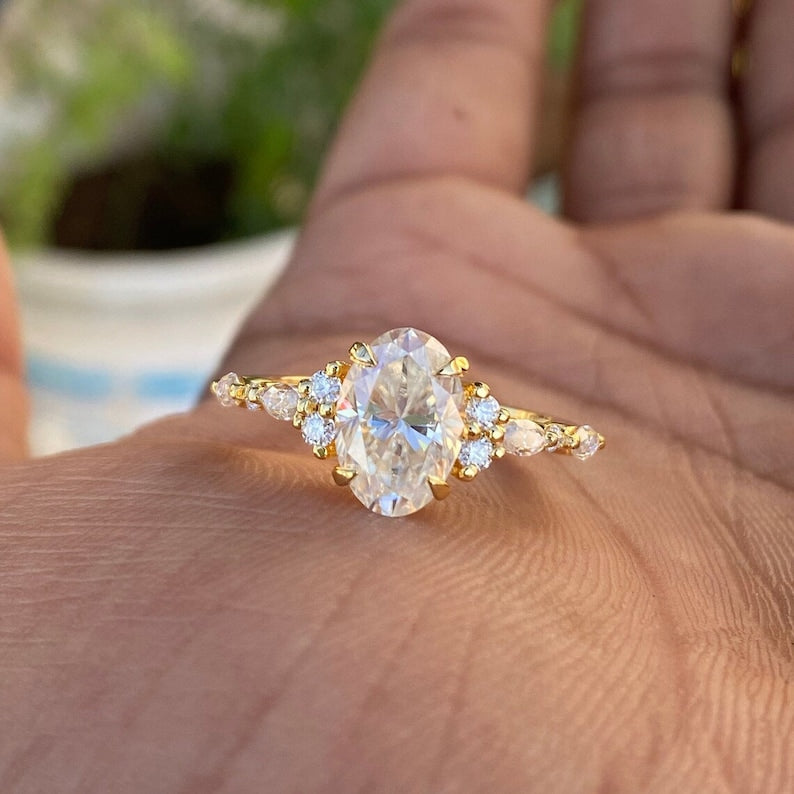
3. Oval Stackable Band (Everyday Versatility)
A dainty, practical style—ideal for building a personalized ring stack:
-
Design: A thin metal band (1mm wide) featuring tiny oval accents: either small oval gemstones (birthstones, colored gems) set in the band, or an oval-shaped metal detail (no gemstones, just a polished oval ridge). The band is lightweight and low-profile, making it comfortable for all-day wear. It’s sold individually, so you can mix and match with other stackable bands (plain metal, round gemstones) to create a custom look.
-
Best For: Everyday wear, office settings, or gifting (birthdays, graduations). A silver-tone oval stackable band with tiny blue topaz pairs with a white blouse; a gold-plated oval band (no gemstones) mixes with a thin round diamond band for a minimalist stack.
-
Why It Works: The small oval accents add subtle personality without feeling flashy. The thin band is easy to stack—you can wear 2–3 together without feeling cluttered—and it’s affordable (starting at $40), so you can build a collection over time.
4. Plain Metal Oval Ring (Minimalist Charm)
For lovers of understated design—perfect for those who prefer metal over gemstones:
-
Design: A polished metal ring with an oval-shaped band (no gemstones). The band may be smooth (high-gloss finish) or textured (brushed metal, hammered detail) and ranges in width from 2–4mm. Metal options include sterling silver, 14k gold, or titanium (for durability). Some styles have a slightly tapered oval shape—wider at the top, narrower at the bottom—to enhance the finger-elongating effect.
-
Best For: Casual wear, everyday use, or as a “starting ring” for someone new to jewelry. A brushed silver oval ring pairs with jeans and a sweater; a 14k gold oval ring complements a linen dress and sandals.
-
Why It Works: It’s the ultimate minimalist piece—simple, versatile, and easy to style. The oval shape adds interest without gemstones, and the polished metal feels refined enough for dressy occasions but casual enough for weekends.
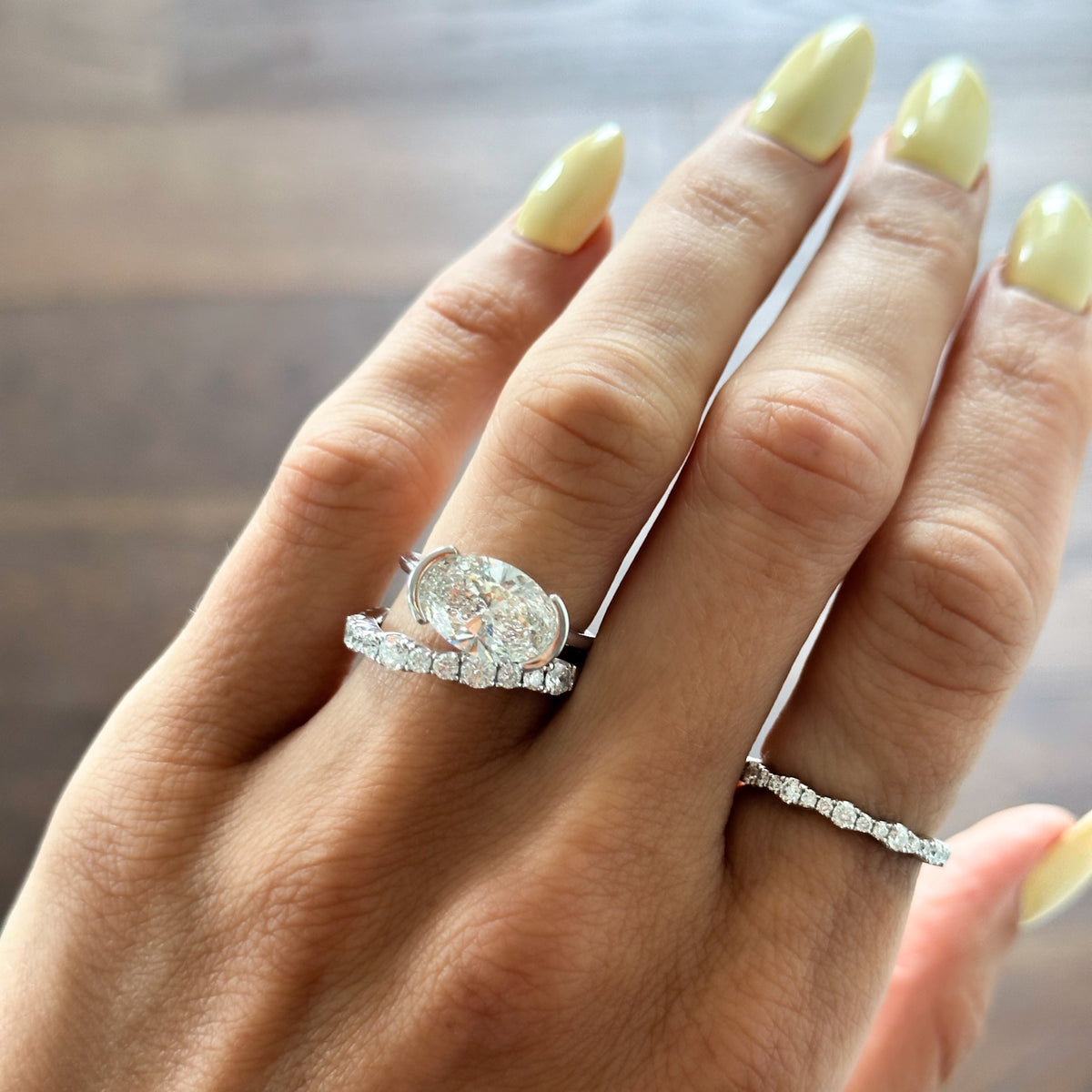
How to Choose the Perfect Oval Ring
Choosing an oval ring is about balancing style, purpose, and practicality. Follow these steps to find your ideal piece:
Step 1: Define the Ring’s Purpose
Start by deciding how and why you’ll wear the ring—this will narrow down your options:
-
Engagement Ring: Prioritize a durable metal (platinum, 14k gold) and a secure setting (prong or bezel) for the oval gemstone. Opt for a solitaire or halo style to highlight the oval’s beauty, and choose a gemstone that fits your budget (diamonds, sapphires, and rubies are popular choices).
-
Everyday Ring: Choose a lightweight, low-profile style (stackable band, plain metal oval) in a durable metal (stainless steel, sterling silver). Avoid large gemstones or bulky settings that may snag on clothes or feel heavy.
-
Special-Occasion Ring: Go for a glamorous style (halo, large oval gemstone) in a luxe metal (14k gold, rose gold). Add gemstones that match the occasion—diamonds for weddings, colored gems (emeralds, rubies) for anniversaries.
-
Gift: Consider the recipient’s style—if they love minimalism, a stackable oval band; if they prefer glamour, a small oval halo ring. Personalize it with their birthstone (for stackable bands) or favorite metal.
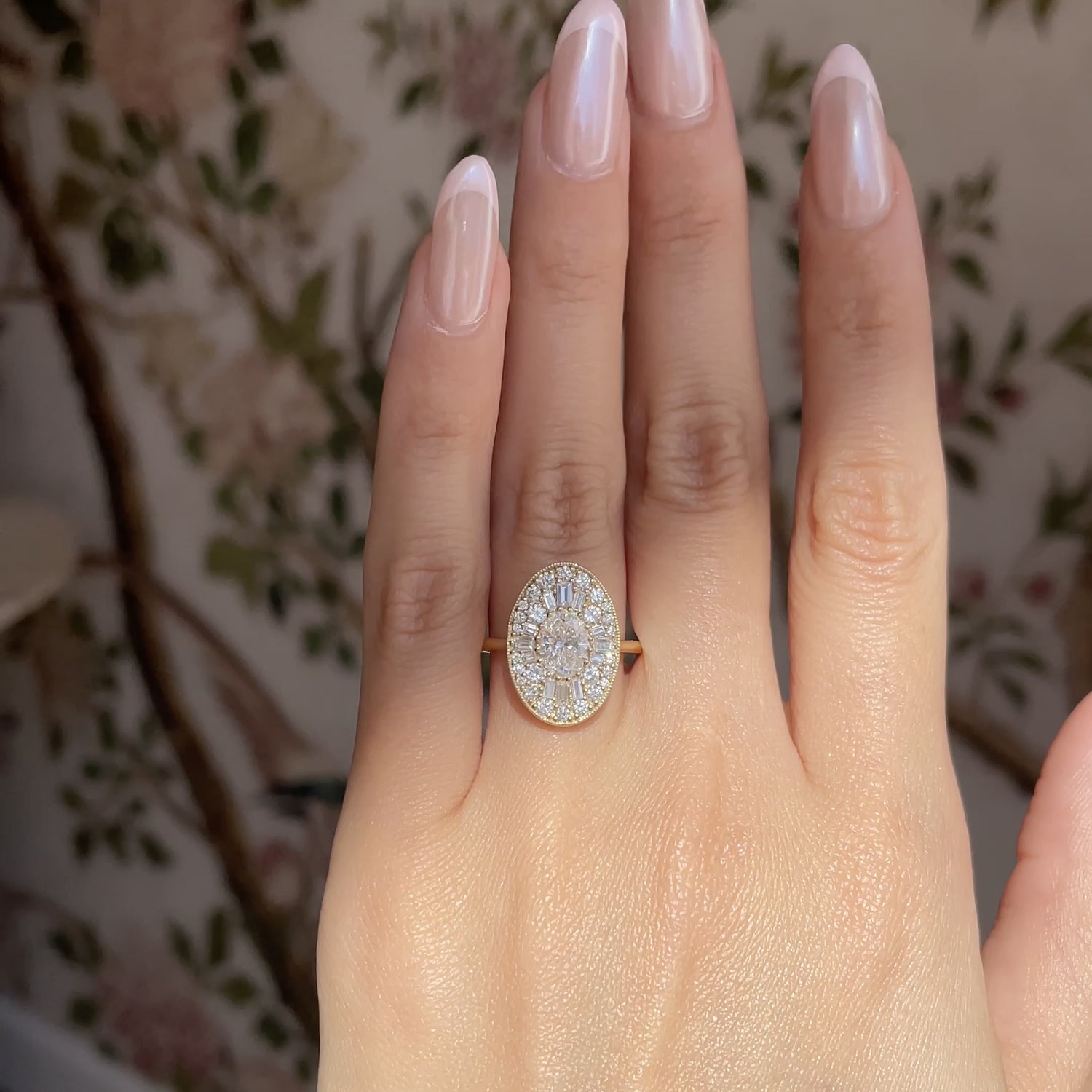
Step 2: Choose the Right Metal
The metal affects the ring’s look, durability, and price. Pick one that complements your skin tone and lifestyle:
-
Sterling Silver: Affordable, cool-toned, and versatile. Best for everyday rings or those on a budget. It may tarnish over time (easily polished with a silver cloth) and is less durable than gold.
-
14k Gold: Warm, luxurious, and durable. Available in yellow, white, or rose gold. Yellow gold flatters warm skin tones (peach, olive undertones); white gold complements cool skin tones (pink, blue undertones); rose gold flatters all skin tones. Ideal for engagement rings or special-occasion pieces.
-
Platinum: Hypoallergenic, extremely durable, and silvery-white. It’s more expensive than gold but doesn’t tarnish and holds up to daily wear. Perfect for engagement rings or anyone with sensitive skin.
-
Stainless Steel/Titanium: Budget-friendly, scratch-resistant, and low-maintenance. Available in silver-tone or black. Great for everyday stackable bands or active lifestyles (gym, hiking).
Step 3: Pick the Right Size & Fit
Oval rings should fit comfortably—snug enough to stay on, loose enough to slide over the knuckle. Here’s how to get the right size:
-
Measure Your Finger: Use a ring sizer (available at jewelers or online) to measure the circumference of your finger. Measure at the end of the day (fingers are slightly swollen then) for accuracy.
-
Consider the Band Width: Wider bands (3+mm) may require a half-size larger than narrow bands (1–2mm). For example, if you wear a size 6 in a thin stackable band, you may need a 6.5 in a 4mm plain metal oval ring.
-
Tapered vs. Uniform Bands: Tapered oval bands (wider at the top, narrower at the bottom) often fit more comfortably than uniform bands, as they hug the finger’s natural shape.
Step 4: Set a Realistic Budget
Oval rings range in price from $40 to $10,000+, depending on style, metal, and gemstones:
-
Budget Under $100: Stackable oval bands (sterling silver or gold-plated) with small gemstones or plain metal oval rings (stainless steel).
-
Budget $100–$500: Solitaire oval rings with small gemstones (0.3–0.5 carats, colored gems like topaz or amethyst) in sterling silver or 10k gold.
-
Budget $500–$2,000: Halo oval rings with diamonds or high-quality gemstones (0.5–1 carat) in 14k gold, or plain metal oval rings in 14k gold.
-
Budget Over $2,000: Engagement-worthy oval rings—solitaire or halo styles with large diamonds (1+ carats) or rare gemstones (emeralds, rubies) in 14k gold or platinum.
How to Style & Care for Your Oval Ring
Oval rings are designed to be versatile—here’s how to make the most of them, and keep them looking like new:
Styling Tips
-
Everyday Minimalism: Wear a single oval ring (solitaire with small gemstone, stackable band, or plain metal) on your index or middle finger. Pair it with a delicate necklace (small pendant) and stud earrings for a cohesive look. This works with jeans and a tee, a sweater and leggings, or a blouse and skirt.
-
Stacked Personality: Mix oval stackable bands with other thin rings. Try a gold oval band with tiny birthstones + a silver plain metal band + a thin round diamond band. Stick to 2–3 rings per finger to avoid clutter, and keep the metals in the same family (warm tones: gold, rose gold; cool tones: silver, white gold) for balance.
-
Formal Elegance: Let a statement oval ring (halo, large solitaire) be the focal point. Pair it with matching earrings (oval gemstone studs, drop earrings) and a simple bracelet. For example, an oval diamond halo ring in white gold pairs with diamond drop earrings and a thin gold bracelet. Avoid other large jewelry—let the oval ring shine.
-
Finger Placement: To maximize the oval’s flattering effect, wear it on your longest finger (middle finger) or ring finger. The elongated shape will slim and lengthen the finger, creating a balanced look. For stackable bands, wear 1–2 on your index finger and 1 on your middle finger for symmetry.
Care Tips
Proper care will keep your oval ring looking shiny and durable—whether it has gemstones or is plain metal:
-
Daily Care:
-
Remove the ring before washing your hands, showering, or swimming (water can damage metal plating, loosen gemstones, or tarnish silver).
-
Avoid applying lotion, perfume, or hairspray while wearing the ring—spray or lather first, then put on the ring. Chemicals can discolor metal or dull gemstones.
-
Wipe the ring with a soft microfiber cloth after wearing to remove oil or dirt. This prevents tarnishing and keeps the metal polished.
-
Deep Cleaning:
-
For gemstone oval rings: Every 2–3 weeks, clean with warm, soapy water (mild dish soap) and a soft-bristled toothbrush. Gently scrub the gemstone and band to remove buildup—be careful not to scratch the stone (especially soft gems like opal or emerald). Rinse and pat dry immediately.
-
For plain metal oval rings: Polish with a metal-specific cloth (silver cloth for sterling silver, gold cloth for 14k gold) every 1–2 weeks to remove tarnish and restore shine. Avoid using abrasive cleaners (they can scratch the metal).
-
Storage:
-
Store the ring in a soft jewelry pouch or a divided jewelry box (separate from other rings) to prevent scratches. For stackable bands, keep them in individual pouches to avoid tangling.
-
Keep away from direct sunlight (can fade gemstones) and humid areas (bathroom, kitchen)—humidity speeds up tarnishing.
-
For engagement rings or valuable oval rings, consider storing them in a jewelry safe when not wearing them for extended periods.
Frequently Asked Questions About Oval Rings
Q1: Are oval rings only for engagement rings?
A: No! While oval rings are popular for engagements (thanks to their flattering shape and sparkle), they’re versatile enough for every purpose. Stackable oval bands, plain metal oval rings, and small oval gemstone rings are perfect for everyday wear, while halo oval rings work for anniversaries or special occasions. The shape’s timelessness makes it suitable for any jewelry need.
Q2: Do oval rings look good on short fingers?
A: Yes! The oval’s elongated shape is especially flattering for short fingers—it creates an optical illusion that lengthens and slims the finger. To maximize this effect, choose an oval ring with a slightly tapered band (wider at the top, narrower at the bottom) and a small to medium gemstone (0.5–1 carat). Avoid overly large gemstones (they can look bulky on short fingers).
Q3: Are oval gemstones more expensive than round ones?
A: No—oval gemstones (including diamonds) are often more affordable than round gemstones of the same carat weight. This is because the oval cut uses more of the original rough stone (less waste during cutting) than the round cut. For example, a 1-carat oval diamond may cost 20–30% less than a 1-carat round diamond—making oval rings a budget-friendly choice for those who want a larger-looking stone.
Q4: Can oval rings be resized?
A: Yes—most oval rings can be resized by a professional jeweler, especially plain metal styles or solitaire rings with simple settings. However, halo oval rings or stackable bands with gemstones along the entire band may be harder to resize (resizing can disrupt the gemstone settings). If you’re unsure, ask the jeweler before buying—they’ll advise if resizing is possible.
Q5: Are oval rings durable for everyday wear?
A: Yes—if you choose the right style and metal. For everyday wear, opt for a low-profile design (stackable band, plain metal oval) in a durable metal (stainless steel, 14k gold, titanium). Avoid large halo rings or delicate prong settings (they may snag on clothes or get damaged during activities like cooking or typing). With proper care, an oval ring can withstand daily use for years.
Conclusion: Oval Rings—Timeless Style That Flatters & Endures
An oval ring is more than just a piece of jewelry—it’s a choice that combines beauty, practicality, and longevity. Its soft, elongated shape flatters every finger, its timeless design never goes out of style, and its versatility makes it suitable for every occasion—from busy workdays to once-in-a-lifetime weddings.






